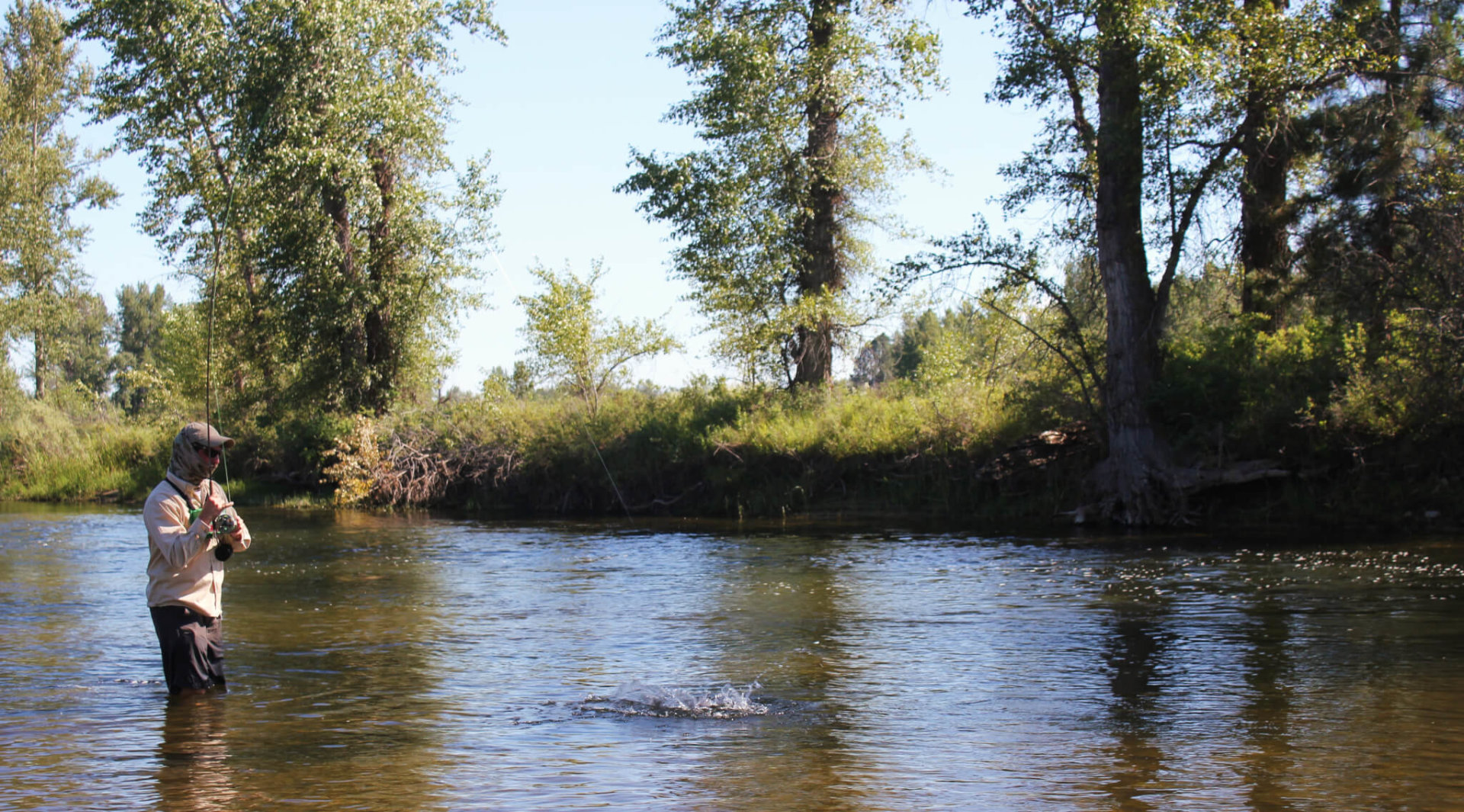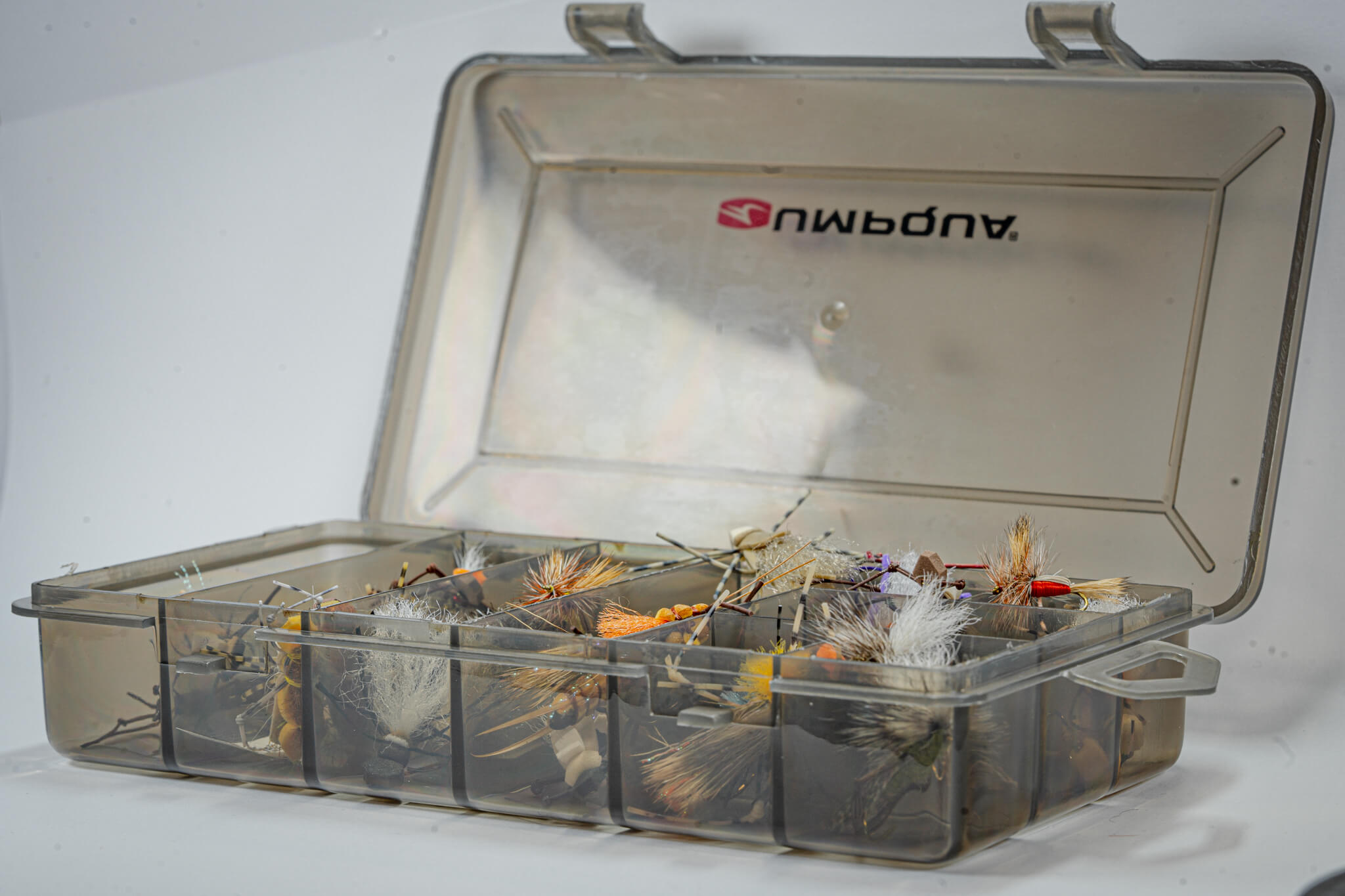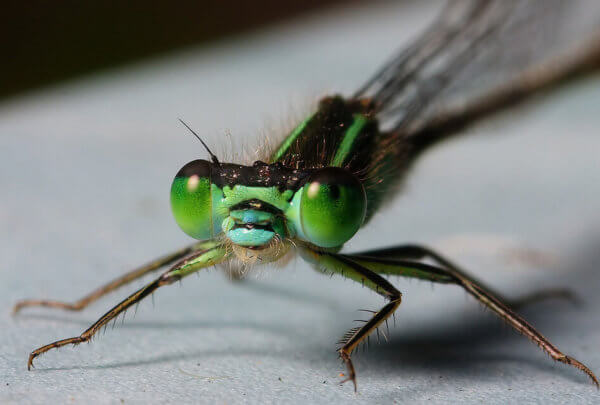The Bitterroot River runs south to north through the Bitterroot valley, and is a very wader friendly river. Fishes big, wades small, and the Bitterroot River hatches are the most diverse in the Missoula area. Here is a list of some of our favorite hatches on the Bitterroot.
Trico
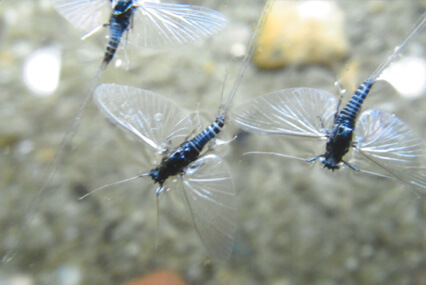
From a hatch matcher’s standpoint, the Trico hatch is the most frustrating, tricky, amazing and challenging of the Bitterroot River Hatches. Coming in at an 18 or 20, the small size starts the trico challenge. Add that the trico is the only local mayfly with distinctive male and female coloration, and toss on the spinner fall that occurs during the hatch, and you have a serious puzzle for the angler to solve.
The Tricos are a blanket hatch, coming off in huge numbers starting mornings in mid-August and continuing through mid-October, depending on weather. The spinner clouds that form above the river prior to the hatch are identifiable by the figure 8 pattern they fly in. The cloud will form about 15 feet above the water, and slowly drop to the surface. The spinners are also identifiable as male and female, so once they fall and the hatch starts, you have male and female spinners on the water, as well as male and female adults, cripples and emergers. The Trico hatch can really stretch the width of an anglers fly box!
Contrary to most mayfly hatches, the tricos hatch best in full sun, which makes the trout a bit skittish when up feeding on this hatch. Which the trout kind of have to do, as the Trico is the only reliable source of food at this time. The fish will line up in the slow glides and pools and take these insects for as long as they are present on the water. While the Tricos will appear above Bell Crossing, the best Missoula Trico fishing is found in the wider, slower sections of the lower Bitterroot River.
Make sure you’re ready for this hatch when you hit the water. Ron’s Trico Spinner has been our top producer for this hatch for years, but you’ll need more flies than that! A Female Comparadun or Trico Sprout will also turn heads when the hatch is on. The Sunken Spinner is a great fly when the fish are focused just under the surface, dropped off a Parachute Trico or even a smaller Royal Wulff- also a sneaky good fly when the tricos are on.
Make sure you’re ready with a well-balanced leader tapered down to 5 or 5.5X. Your casting needs to be somewhat long and quite accurate. The tricos are so small, and there are so many on the water. The trout don’t move very far to the left or right to take your fly. It needs to be in the feeding lane, floating correctly, and matching the phase of insect that particular fish is feeding on. Spinner, adult, cripple or emerger in both male and female. It can be the most frustrating hatch to work when you’re not on, but when you find the fly and start getting the drift, the satisfaction of having solved the riddle is one of the best feelings you can have when heading out to match wits with the wily trout!
Skwala
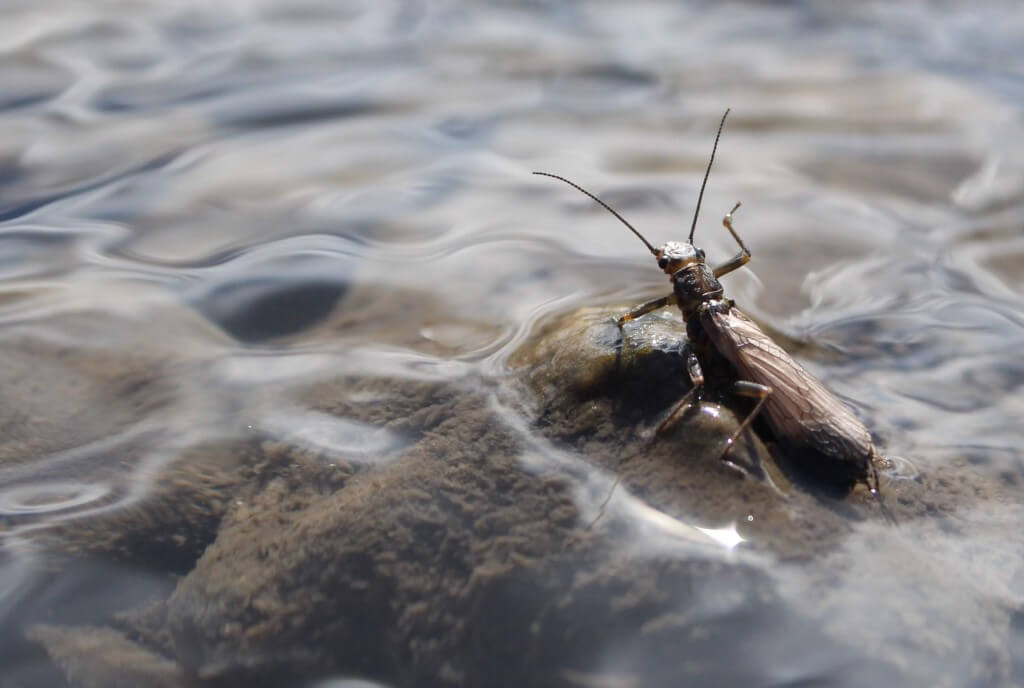
The Bitterroot River is known across Montana and the west as having the best skwala stonefly hatch in the area. This early spring stonefly begins hatching in the 2nd or 3rd week of March and will continue through run-off. The females are olive and run from size 8 early in the hatch to a size 12 near the end. The males are dark and smaller, and rarely find their way to the water. As with all stoneflies, the Skwalas emerge by crawling out along the sides of the river, so the trout will follow the nymphs to the shore. Use a Double Bead Peacock Stone or an Pats RubberLegs to match the nymphs early in the hatch.
The Skwalas will come off along the entire length of the Bitterroot River, as well as the East Fork and West Fork of the Bitterroot. As the first hatch of the year, there’s a lot of pent up fly fishing in Missoula, and the Bitterroot can see its fair share of anglers at this time. Pick your days to fish the Skwalas! They will hatch in the worst conditions- snow, rain, clouds and cold weather. Conditions like that tend to turn away the faint of heart. Dress warmly and go knock ‘em silly!
If you’re running a dropper like a Tungsten Hare’s Ear Jig for the Western March Brown nymph, use an Morning Wood Skwala or Olive Water Walker. These big foamies will float your nymph and work well early in the season. As the hatch progresses, and the fish get wise, switch up to the Little Olive Stone or Rogue Stone Skwala. They float lower in the water, and look more realistic to the fish.
Skwalas will hatch on gray days, and with their dark coloration can be very difficult to see on the water. You must look carefully for them as they go floating by. The random rise will also alert you to their presence on the river. Work the good looking water, and be ready for some slow times, especially in the colder morning. The crafty Skwala angler will often wait for the afternoon to start fishing, allowing the temperatures to warm and get the adults flying. It’s a great way to start the season- big bugs and lots of action!
Western March Browns
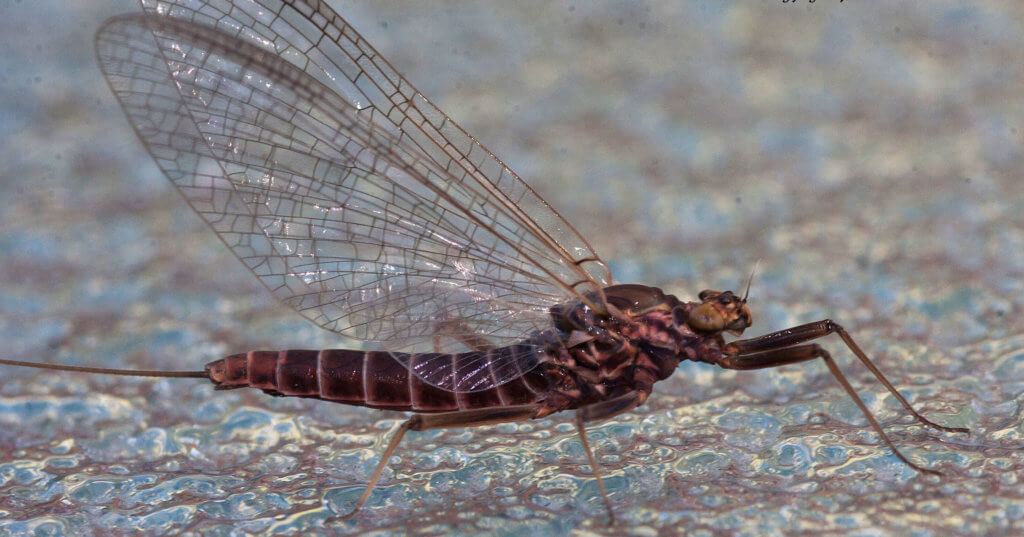
The Western March Browns will start hatching in the last week of March, and will go through run-off. The WMB is well imitated by the Purple Haze, Parachute Adams or the Parachute Hare’s Ear. While the WMB’s come off consistently during the Spring, they are rarely a blanket hatch. Unlike the Trico, it doesn’t take a lot of flies to effectively fish the WMB’s. Sure, a cripple or emerger is useful, but certainly not required.
The WMB’s really like clouds, and that can be a bit problematic early in the hatch. It takes a bit of warmer weather to get the flies moving at the beginning, and clouds aren’t always the best at allowing warmth. But once the WMB’s get established by the first week in April, they consistently come off in the afternoons along the length of the Bitterroot River. They’re found in size 12-14, but concentrate mostly on the size 14. When you go subsurface with a WMB nymph, have a few Umpqua Ptail Jig or PT Hot Spots to get deep quickly and stay in the zone. This is one of the favorite bitterroot hatches for local and traveling anglers.
Golden Stones

The Golden Stones could just have easily been the third hatch on this list of best Bitterroot river hatches. They are a very prolific hatch on the Bitterroot River, including the East Fork and West Fork. Unlike the Skwala, which is a single species, the Golden Stone hatch is comprised of multiple species that range in size from 6- 12, with the most falling in the 8-10 zone. Expand that slightly, and you can include the Yellow Sallies, which are smaller Golden Stones in size 14-16. In the last week of June through July, the Goldens offer a smorgasbord of insects for the trout to gorge on.
The upper stretches of the Bitterroot are faster and choppier, so a high floating Golden like a Plan B Golden or an El Camino Golden are strong producers. In the lower sections, where the water may be a little calmer, the PK Golden or Rastaman Golden will perform very well. Make sure to have some Tan/Brown Pats RubberLegs with you when the surface action isn’t where you want it to be. Be ready for bigger water during the Golden hatch, especially at the start of the hatch, and work the edges of the river. As the water drops during July, the fish will move from shore to their familiar summer feeding stations.
Mahoganies
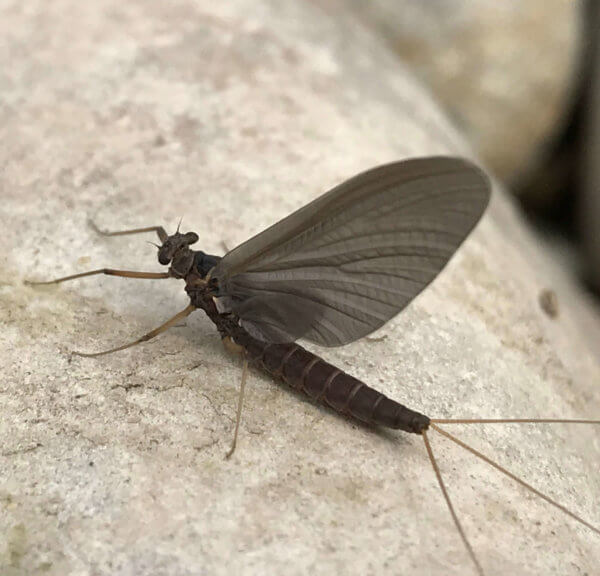
The majestic Mahogany is found on the Bitterroot River from the first September rains through the first real snowfall. They hatch in the heat of the day, which on some October afternoons can be 45 degrees! They’re a sizable insect, about a 12-14, and are easily seen on the water. The Mahoganies aren’t a blanket hatch, and if you get a reasonable imitation over a fish, they will usually take.
We like the Tilt Wing Mahogany at this time of year, as well as the Pheasant Tail Dry. If you want to get fancy, a Hi Viz Rusty Spinner in a 14 can be money, as can a Mahogany Sprout. When you go subsurface, an Solitude Pheasant Tail Jig or Quill Perdigon Jig will be very effective during this hatch. While it hatches along the length of the river, the best hatches are found below Bell Crossing.
Honorable Mention For Bitterroot River Hatches
Honorable mention on the best Bitterroot River hatches goes to the Hecuba hatch. While not a prolific hatch by any stretch of the imagination, the Bitterroot trout love this late summer/fall hatch and will take them whenever they’re on the water. If you find yourself on the water in Fall with little happening, tie on a Brindle Chute in a size 12 and start prospecting. You’ll be pleasantly surprised at the results!

